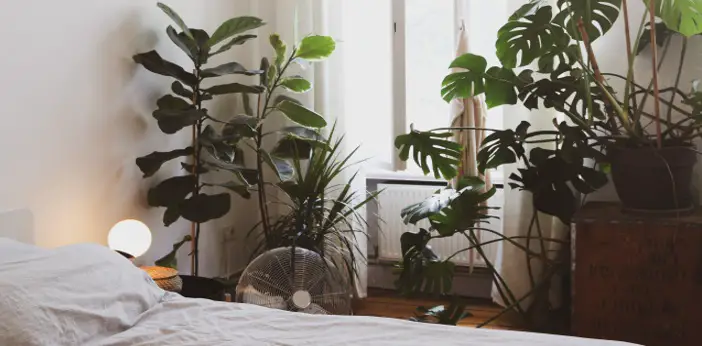The bathroom is a small space and can be challenging to decorate, but it’s also a great place to add some greenery to your home.
While you might think that plants would be the last thing you’d want in your bathroom, they actually can do wonders for your mood and health.
Plus, they’ll bring some oxygen into an otherwise stagnant space. So if you are looking for a new addition to your bathroom or just want some ideas on how to use plants more efficiently in this space, here are the best plant choices:
Table of Contents
1. Stick to hardy plants
What is a hardy plant? A hardy plant is one that requires little care and can endure the elements. These are not to be confused with plants that thrive in all conditions, which are called “tender” or “tropical.”
Hardy plants require minimal water and sunlight, making them perfect for bathrooms where you might forget to water your plants as often as you should.
Examples of hardy houseplants include:
- African violets
- Bromeliads (a type of flowering plant)
- Cacti (a type of succulent)
- Ferns
2. Consider the plant’s size
You may think that a plant is just a plant, but there are actually some important considerations to keep in mind when choosing your bathroom plant.
Two of the most important things to consider when choosing any type of house plant are,
Size
You don’t want to choose a large or tall-growing plant if you live in an apartment with small rooms and/or low ceilings.
On the other hand, if you have plenty of room in your bathroom—and if your bathroom has enough natural light—you can opt for whatever size and type of plant you’d like!
Lighting requirements
It’s best to choose plants that don’t require much direct sunlight (like succulents). Plants that need more light than this can be placed near windows where they’ll receive indirect sunlight through sheer curtains or blinds.
However, this may not always be enough for certain species depending on their needs so make sure you do some research before making an investment!
3. Choose plants with different requirements
When choosing a plant for your bathroom, it is important to consider how much light the plant will receive. If you have a small space, consider using a hanging basket. If you have a large space, consider using a floor plant.
4. Choose plants that thrive in low light
There are a number of plants that thrive in low-light conditions and make great additions to your bathroom. Dracaena also referred to as the corn plant, is one such plant.
Over time it will grow in size, but this is a slow process so you won’t have to worry about it taking over your space anytime soon. Another good option for bathrooms is the snake plant (also known as mother-in-law’s tongue).
Snake plants aren’t only good at tolerating lower levels of light; they also purify the air around them by removing toxic gases from the atmosphere!
The ficus tree is another great choice if you have little natural light coming through your windows – ficuses are incredibly adaptable and will thrive even when being grown indoors with artificial lights only!
Others include;
- Spider plant: This one’s a classic! It has a long history of being used in bathrooms because it can grow in low light and humid conditions. The spider plant is also very easy to propagate, so you can add to your collection whenever you want.
- ZZ plant (ZZ) or mother-in-law’s tongue (Hoya carnosa): The ZZ plant comes from Southeast Asia and likes warm temperatures but will tolerate colder ones as well. It needs little water or sunlight to thrive once it’s established, making this one another good choice for your bathroom!
5. Avoid ferns and other plants that need a lot of humidity
Plants that require high humidity include ferns, philodendrons, peace lilies, and spider plants. If you are looking to add a plant that needs low humidity to your bathroom then consider cacti or succulents.
If you don’t know the specific requirements of a plant before purchasing it then try to find out what kind of light and water it will need.
Sometimes this information can be found on the package or tag attached to the plant when purchased at the store.
6. Choose plants that thrive in moist soil
You want to make sure that the plants you choose thrive in moist soil.
- Pothos (a type of houseplant)
- Jade plant
- Money tree
- English ivy
- Azalea (commonly used as a ground cover)
- Grape ivy, or Boston ivy (has leaves similar to grape clusters)
- Ficus trees (widely available and easy to grow)
Bamboo palms are also great choices for bathrooms because they require very little maintenance and thrive in humid environments.
Conclusion
There’s no doubt that a bathroom plant can make your space feel more welcoming and beautiful. But it’s also important to choose plants that will thrive in the conditions you provide them with, so they don’t die on you before they get a chance to do their job!
If you have room for multiple types of plants in your bathroom, consider finding one that needs less light than others—or even just one large plant (like an umbrella tree) instead of several smaller ones.
And if low humidity is an issue, think about which other rooms in your house have humidifiers or dehumidifiers.
These tips should help keep even the most delicate houseplants healthy while they give off some much-needed good vibes around here!

